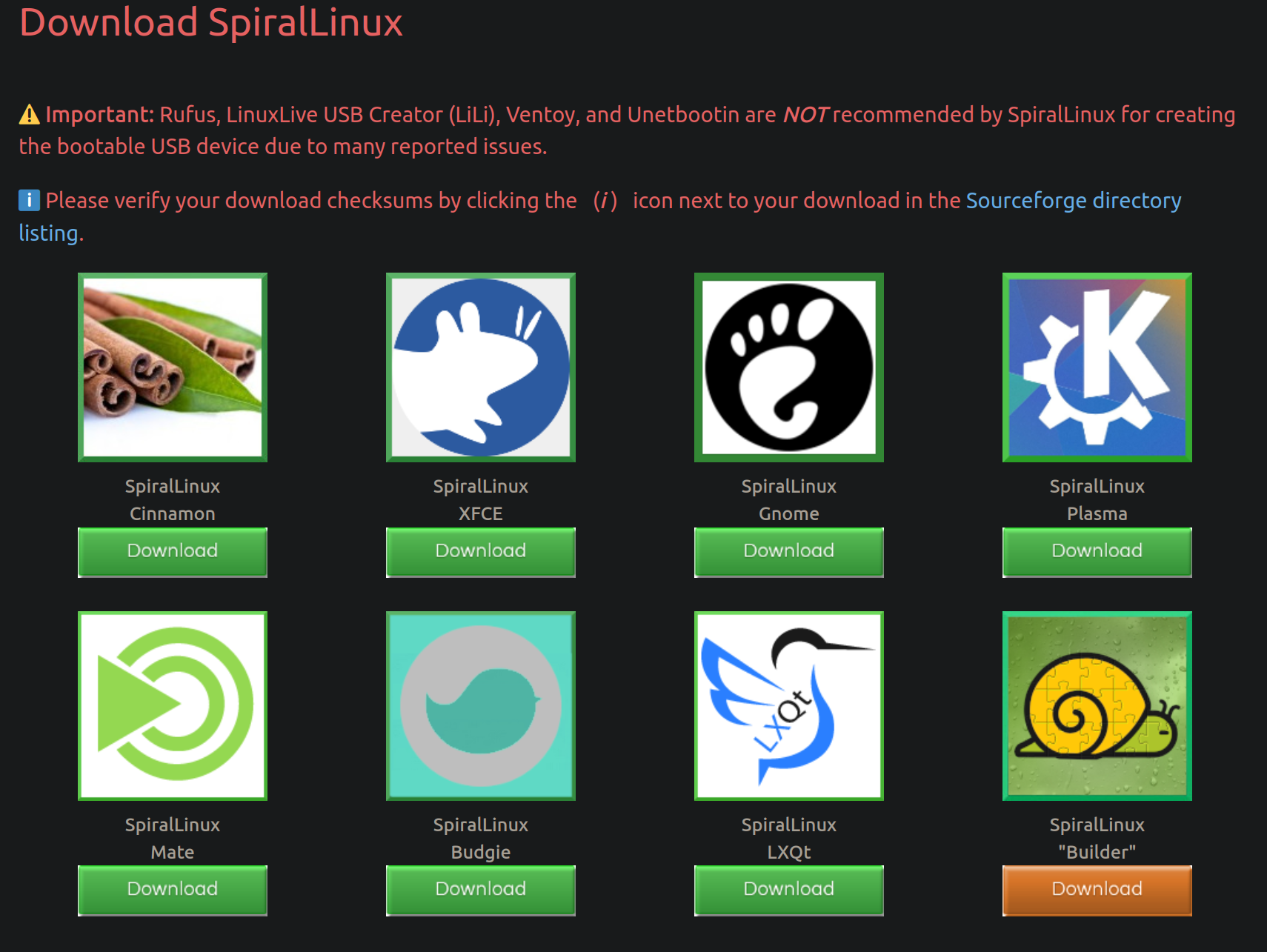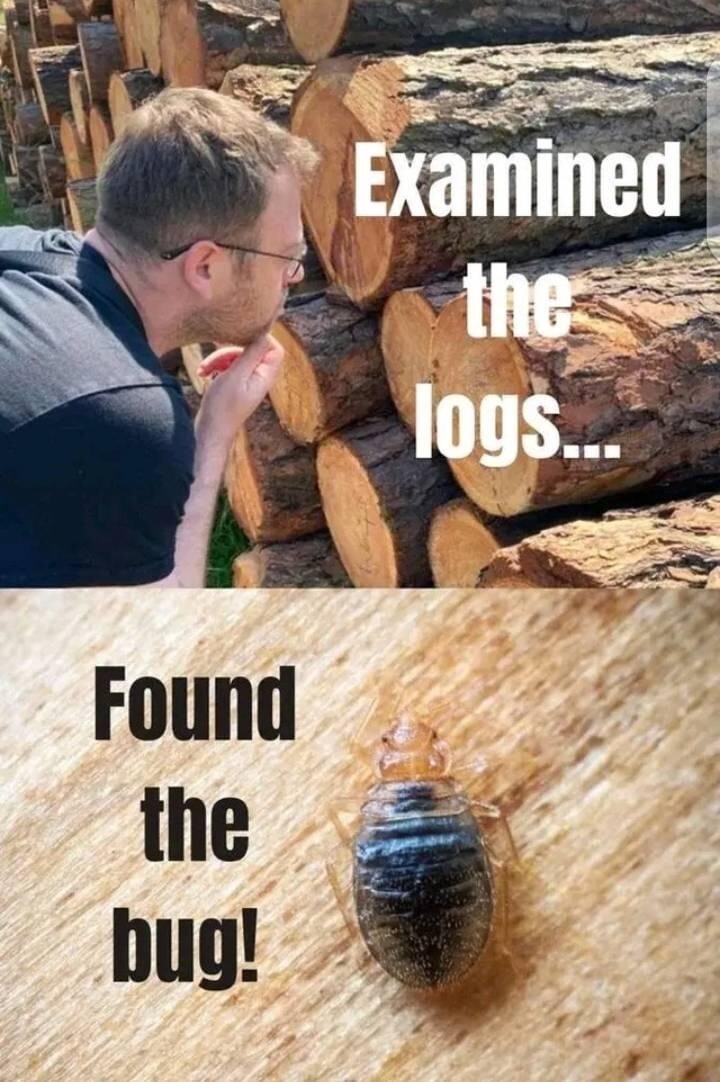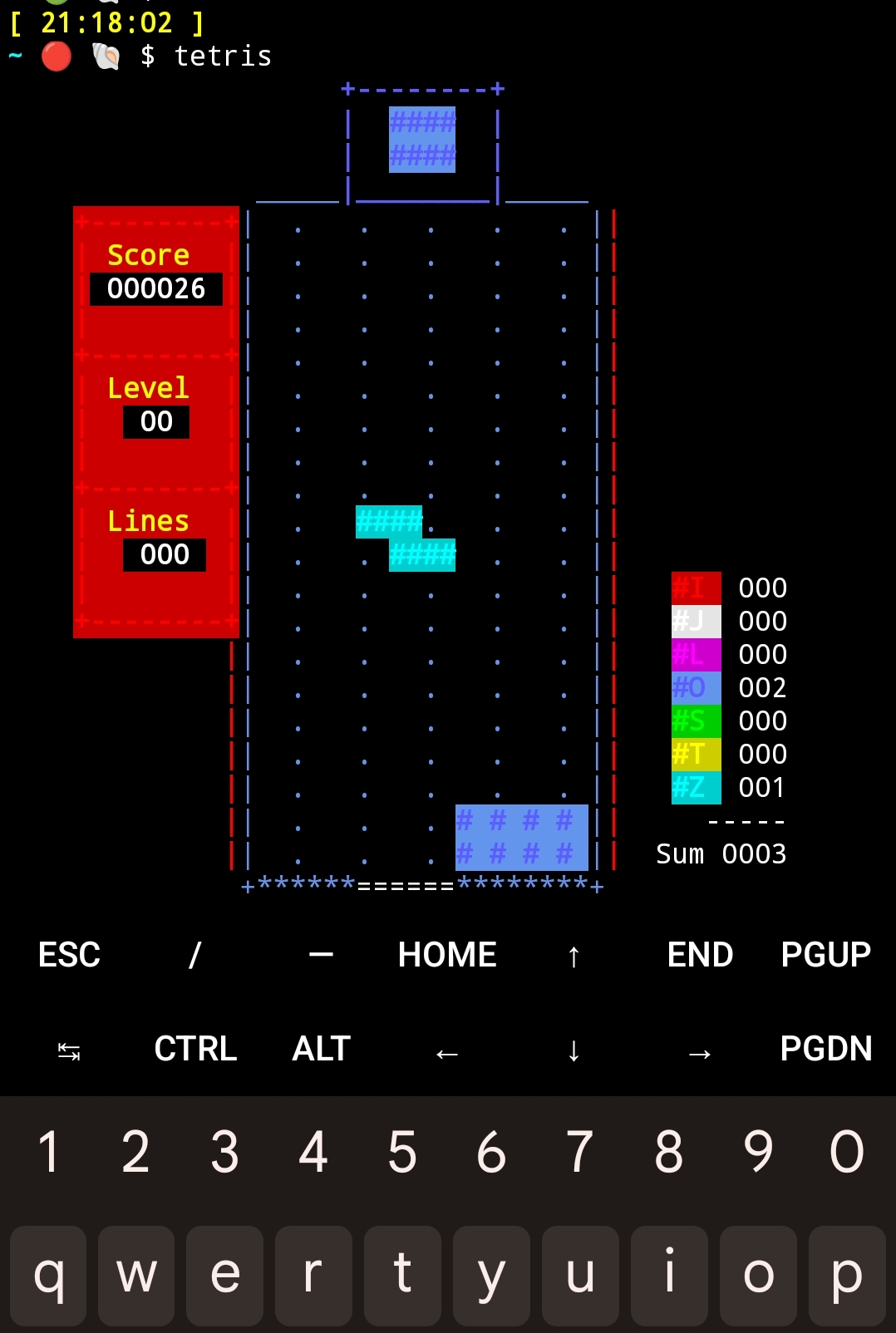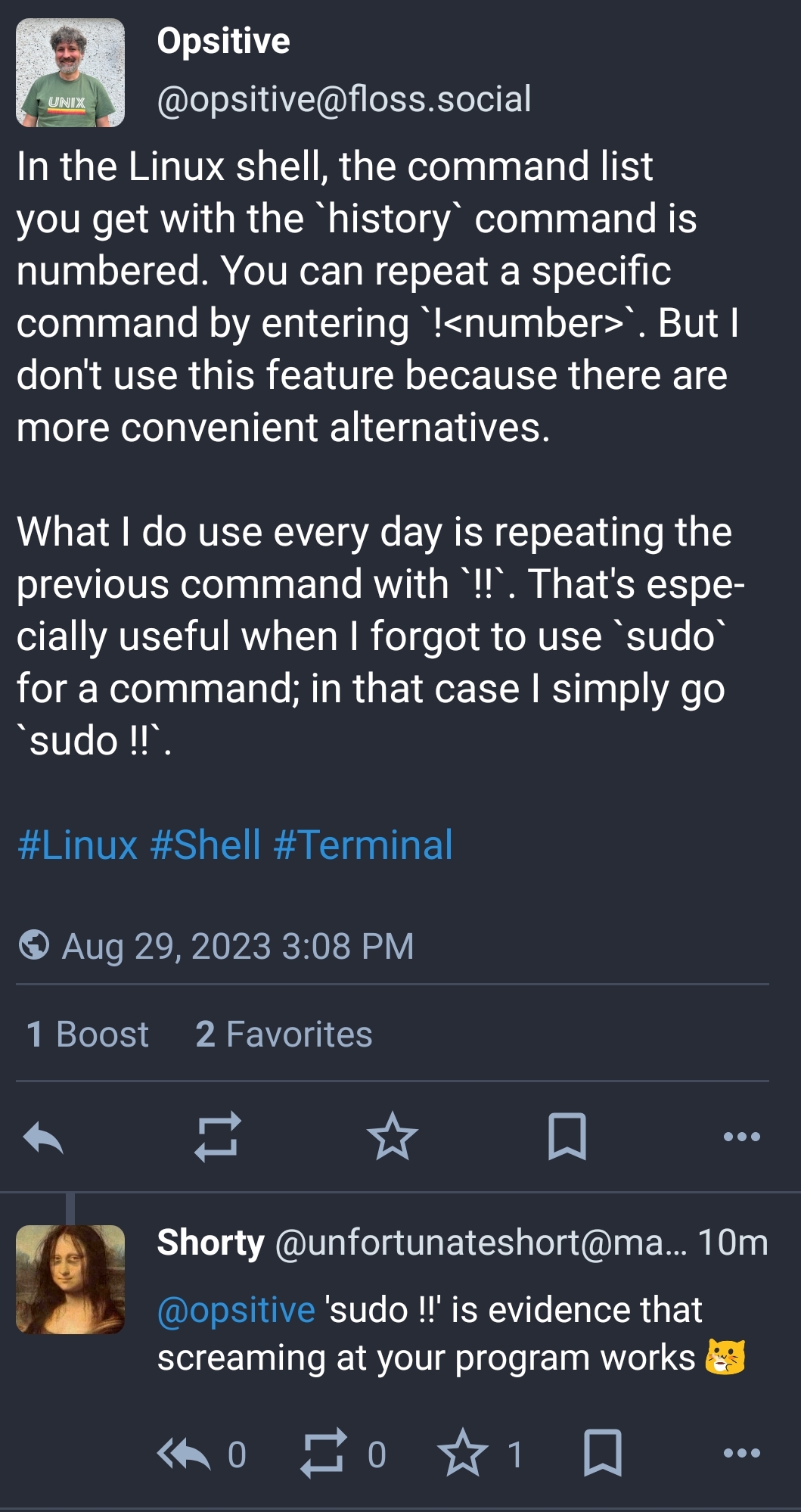Cowards version:
[ $[ $RANDOM % 6 ] == 0 ] && echo 'rm -fr /... you crazy dude? NO' || echo 'Keep your french language pack, you will need it'

super productivity is pretty good.
You can also sync between your phone, desktop, etc using different sync options including Dropbox, webdav, local file, etc
As someone who has done a lot of debugging in the past, and has also written many log analysis tools in the past, it's not an ether/or, they complement each other.
I've seen a lot of times logs are dismissed in these threads recently, and while I love the debugger (I'd boast that I know very few people who can play with gdb like I can), logs are an art, and just as essential.
The beginner printf thing is an inefficient learning stage that people will get past in their early careers after learning the debugger, but then they'll need to eventually relearn the art of proper logging too, and understand how to use both tools (logging and debugging).
There's a stage when you love prints.
Then you discover debuggers, you realize they are much more powerful. (For those of you who haven't used gdb enough, you can script it to iterate stl (or any other) containers, and test your fixes without writing any code yet.
And then, as your (and everyone else's) code has been in production a while, and some random client reports a bug that just happened for a few hard to trace events, guess what?
Logs are your best friend. You use them to get the scope of the problem, and region of problem (if you have indexing tools like splunk - much easier, though grep/awk/sort/uniq also work). You also get the input parameters, output results, and often notice the root cause without needing to spin up a debugger. Saves a lot of time for everyone.
If you can't, you replicate, often takes a bit of time, but at least your logs give you better chances at using the right parameters. Then you spin up the debugger (the heavy guns) when all else fails.
It takes more time, and you often have a lot of issues that are working at designed in production systems, and a lot of upstream/downstream issues that logs will help you with much faster.
The traffic is stuck in the traffic🚦
I'm a bit sad that my favorite (Infinity/Eternity) isn't that high up. Loved it since my Reddit days. Tried different clients: Lemmy, thunder, liftoff, sync,... still like this the most!

Somehow reminds me of this

I have a massive subscribe list, and I usually just read subscriptions. I'll occasionally (maybe once it twice a week) read all, and if I notice interesting communities: subscribe to them too.
Unlike real Apple devices, his contraption wasn’t programmed to collect any data from nearby iPhones, even if the person tapped and accepted the prompts. But, in theory, they could have collected some data, according to Bochs.
Title: Comparative Analysis of Flatulence Incidents Involving Horses and Dogs: An Examination of Fart Exposure Rates
Abstract: This comprehensive study investigates the fascinating phenomenon of fart exposure rates among various animal species, focusing primarily on horses and dogs as the principal subjects of interest. Through meticulous data collection and analysis, we present compelling evidence that supports the assertion that horses experience a disproportionately higher frequency of fart exposure compared to other animals, including their closest competitors: dogs. Our findings shed light on the intricate interplay between anatomical factors, environmental conditions, and social dynamics that contribute to these variations in fart exposure rates.
Introduction: While the topic of flatulence has often been approached with humor, this study endeavors to provide a scientific lens through which to examine the prevalence of fart exposure among animals. Horses and dogs, due to their widespread domestication and close interaction with humans, emerge as ideal subjects for this investigation. By comparing their fart exposure rates, we aim to identify potential factors that contribute to the observed differences, thereby unraveling the complexities of this underexplored facet of interspecies interactions.
Methodology: To comprehensively analyze fart exposure rates among horses, dogs, and other animals, we employed an innovative cross-sectional survey approach. Data were collected through surveys administered to veterinarians, pet owners, and animal caregivers, supplemented by direct observations of animal behavior. Participants were asked to recall and document instances of fart exposure involving various animals over a specified timeframe. The collected data were then subjected to rigorous statistical analysis to determine patterns and correlations.
Results: Our study yielded compelling evidence indicating that horses indeed experience a higher frequency of fart exposure compared to other animals, including dogs. Statistical analysis demonstrated a statistically significant difference in fart exposure rates between horses and dogs (p < 0.05). Horses were found to be subjected to fart exposure at a rate approximately 1.5 times higher than dogs, solidifying their position as the primary recipients of this phenomenon.
Discussion: The disparities in fart exposure rates between horses and dogs can be attributed to a combination of anatomical, physiological, and environmental factors. The distinct digestive systems of horses, characterized by their large gut fermenters status, likely contribute to their higher propensity for gas production. Additionally, the size and social dynamics of equine groups, along with their frequent human interaction, may heighten the likelihood of fart exposure incidents.
Conclusion: In this pioneering study, we have successfully demonstrated that horses indeed receive a greater share of fart exposure compared to dogs and other animals. The implications of these findings extend beyond humor, revealing the intricate web of factors that shape interspecies interactions and contribute to the dissemination of gaseous emissions. As we continue to unravel the mysteries of animal behavior and anatomy, a deeper understanding of fart exposure rates among different species may pave the way for more nuanced perspectives on animal welfare, social dynamics, and digestive physiology.

Me wishing there were public bidets in the US and feeling dirty when I use non-bidets in an emergency.





Balls of plastic. Descended from balls of steel 💪